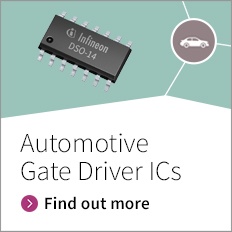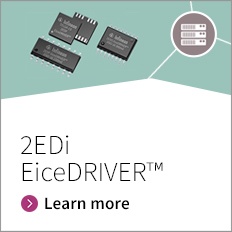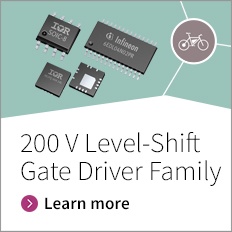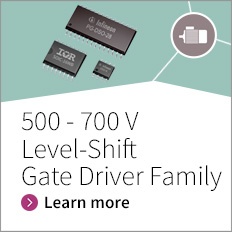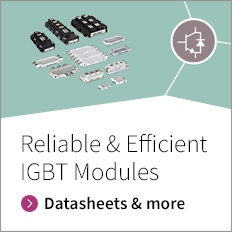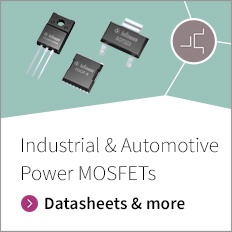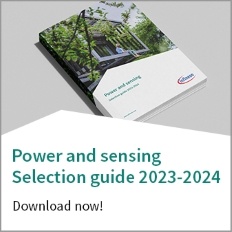Half-Bridge Drivers
Half bridge gate driver ICs with shoot through protection, to control MOSFETs and IGBTs
Infineon’s gate driver IC solutions are the expert’s choice. We offer half bridge gate drivers with two interlocked channels.
Now including the new 650 V half bridge silicon on insulator (SOI) gate driver ICs with high current (2.5 A) and low current (0.7 A) option. With excellent ruggedness and noise immunity, these gate drivers are perfect for motor drives, home appliance, SMPS, battery powered applications and high power lighting.
We also offer automotive qualified half bridge gate driver ICs.
Find detailed information
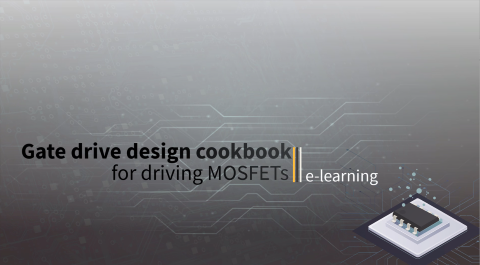
You will have a glimpse of the different gate driver technologies available at Infineon and their benefits.
For a better understanding we will take a look at the optimization of external gate resistors to drive MOSFETs in a given application.
With this training, you will learn how to calculate a gate resistance value for an IGBT application, how to identify suitable gate driver ICs based on peak current and power dissipation requirements, and how to fine-tune the gate resistance value in laboratory environment based on worst case conditions.
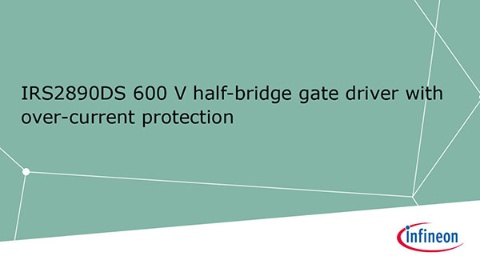
Training course about the IRS2890DS 600 V half-bridge gate driver. Identify its key features and benefits. Find out more about key applications and learn to categorize the IRS2890DS in the gate driver product portfolio.
This training features how the level-shift gate drivers work, what are negative voltage transient and how they affect level-shift gate drivers. In addition you will learn about the technology difference between Junction isolation and Infineon’s Silicon-On-Insulator technology.
We offer a large portfolio of level shift high voltage gate drivers – silicon-on-insulator (SOI) and junction isolated (JI) technologies. Learn about the advantages of Infineon SOI gate driver: integrated bootstrap diode, Low level-shift losses, saving space and cost, and negative VS robustness.

